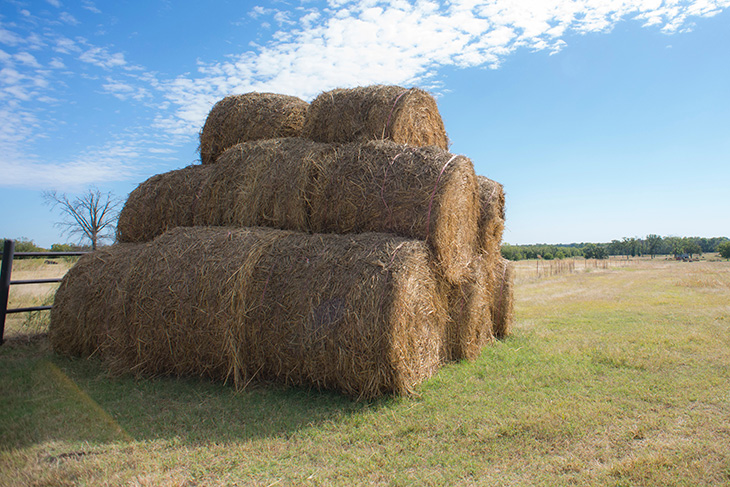
Forage analysis on hay to be fed this winter a sound management tool
Thursday, August 23, 2018
Oklahoma State University’s Division of Agricultural Sciences and Natural Resources recommends livestock producers conduct a forage analysis on hay they will feed to their animals this winter.
“Hay fields in some areas of Oklahoma have produced an average-to-above-average number of big round bales this summer, but the quality will be quite variable,” said Glenn Selk, OSU Cooperative Extension emeritus animal scientist and managing editor of the university’s popular Cow-Calf Corner newsletter.
In short, some of the hay will supply a great deal of the nutrients needed to maintain good body condition in beef cows this winter. Other hay will be lacking in protein and energy and will require a substantial amount of supplement to be fed to help ensure the cattle do not lose weight and body condition.
“Testing grass hays this year for protein and energy content will help the producer design winter supplementation programs most appropriate for the forage supply that is available,” Selk said. “There are several good methods of sampling hay for forage analysis. Most nutritionists would prefer to use a mechanical coring probe made specifically for this purpose.”
The coring probe is usually a stainless steel tube with a serrated, cutting edge. It is 1 inch in diameter and is designed to fit on a half-inch drill or brace. Cordless drills make these tools quite mobile so the hay bales being tested do not have to be hauled near an electrical outlet.
“Hay samples are placed in paper or plastic bags for transfer to a forage testing laboratory,” Selk said. “Cores are taken from several bales at random to obtain a representative sample to be analyzed.”
To promote the best possible analysis, grab several samples by hand from about 6 inches into the open side of the bale or the middle third of a round bale. Place all of the sample in the bag. Do not discard weeds or stems just because they look undesirable, as they are still part of the hay being offered to livestock.
“Be certain to label all forage samples accurately and immediately, in order for the laboratory analysis to be correctly assigned to the proper hay piles or bales,” said Hailin Zhang, OSU Cooperative Extension nutrient management specialist and director of the OSU Soil, Water and Forage Analytical Laboratory.
The greater the number of samples sent to the laboratory for analysis, the more information that can be gained.
“A producer’s out-of-pocket expense will increase with more samples but it is an investment more than a cost,” Zhang said.
Selk agreed, citing potential problems with nitrate-accumulating hays means livestock producers should not take chances with the health of their herds.
Producers can take hay samples to their OSU Cooperative Extension county office, which will be forwarded to Zhang at his laboratory. Zhang said the OSU laboratory is not in the business of turning a profit – the fees charged are only set relative to what the laboratory requires to continue operation – and Oklahomans can employ private laboratories if they wish.
Information of matching supplements with available forages is available online at http://facts.okstate.edu by accessing OSU Fact Sheet ANSI-3010, “Supplementing Beef Cows.”
The Oklahoma Cooperative Extension Service is one of two state agencies administered by DASNR, and is a key part of the OSU’s state and federally mandated teaching, research and Extension land-grant mission.
